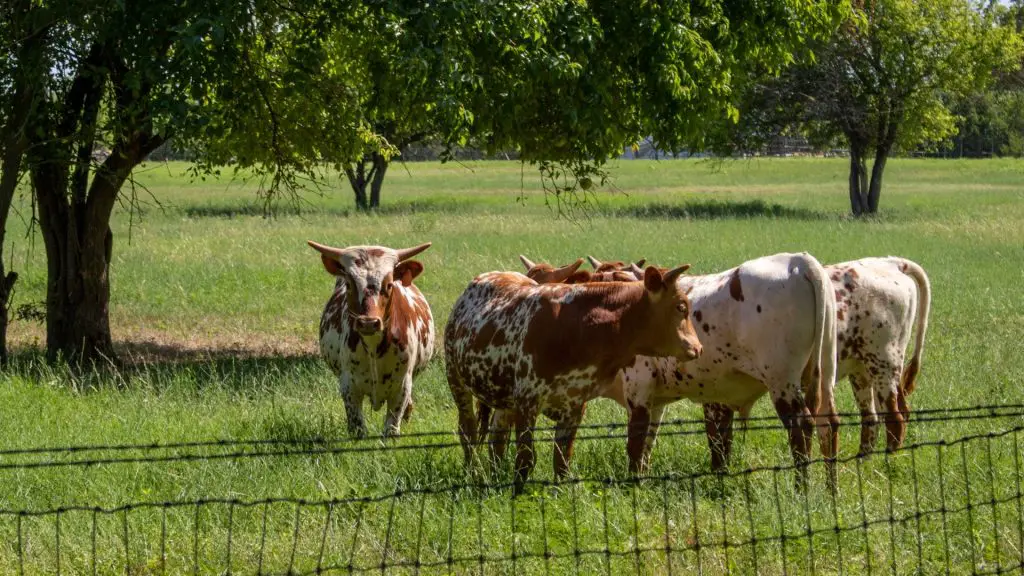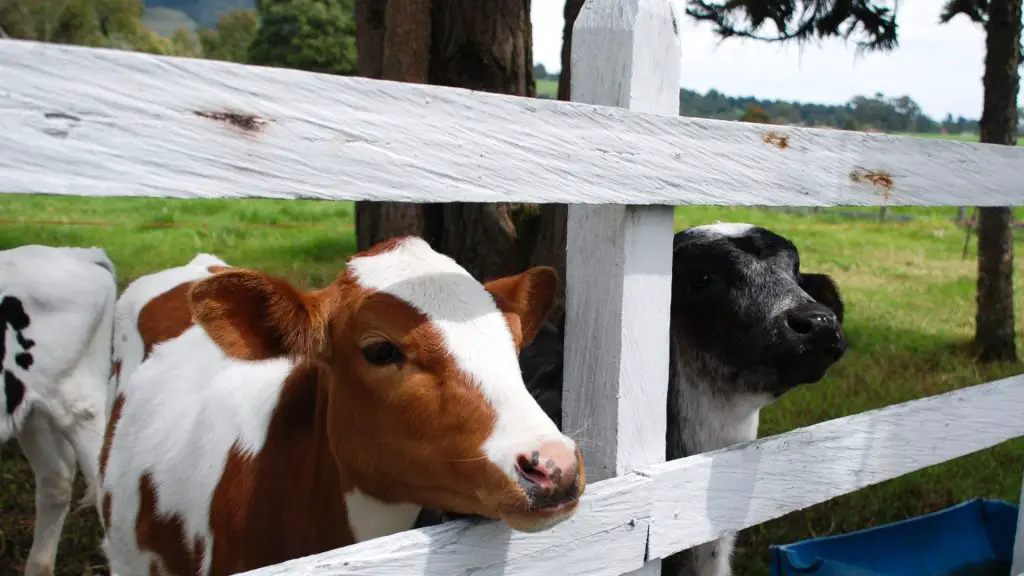How much does a baby cow cost in the USA? You might not know this answer yet. There are many factors to consider, including time and nurturing before they can produce milk or meat for you. Read on below to decide if owning a baby cow is right for you.
How much does a baby cow cost in the USA? A baby cow can cost from $40 to $600 in the USA, but prices vary depending on what state you buy it. The weight and age of the cow will affect its price as well. For example, baby cows younger than six months might sell for less because they’re not yet producing milk as the older ones do. Some states require transportation taxes when shipping to make your purchase happen.
In this article, we’ll go over how much a newborn cow costs in the United States and how to get one. This article will also discuss the factors that influence a baby cow’s worth, as well as the advantages and disadvantages of raising them.
Factors Affecting a Baby Cow’s Worth in the USA

The cost of baby cows is determined by their age and size.
If you buy a baby cow that is only one day old, it will require more care and work because they need to be fed milk from a bottle every day. They also have a high mortality rate. That’s why they need adequate housing, nutrition, and preventative medical care.
On the other hand, a 4–6-month-old baby cow is more stable and will cost you according to its weight. The average price for a cow of that age ranges from $650-$750. But be prepared with increased prices for some necessities.
How Much Does Raising a Baby Cow Cost Annually in the USA?
Raising a baby cow can start from $500 to $1,000 per year, including care and feed. Purchasing the cow will become less expensive. It would be best to have extra land to grass-feed it with two acres needed for each cow to provide grazing needs.
On top of feeding them, the cost depends on what type they are (meat or dairy). For meat baby cows, 30 pounds of hay need to be provided daily, with 40 pounds normal. However, the efficient dairy baby cows require 100 pounds because food intake varies from day to day.
Other necessities that require expenses in raising baby cows include:
- Vet bills
- Corn, Barley, and Oats
- Hay, Alfalfa and Grain
- Breeding
- Supplements and Minerals
- Halters and other equipment
Can You Buy a Baby Cow in the USA?
If you’re searching through the market for a baby cow, it’s best to start by sorting through your options.
- Buy one from a local farmer who may sell at less than market prices. Most local dairy farmers in the United States are willing to part with male cows because they aren’t needed for milk production.
- Check feed station bulletin boards. Ask the feed store employee if they know anyone in your neighborhood who has baby cows for sale.
- Try ordering and purchasing online, which has many benefits. That includes more information about specific breeds before purchase and plenty of reviews on quality control.
- Several business websites offer baby cow sales. You can also try contacting or looking for farming groups on social media and websites.
Advantages and Disadvantages of Raising Baby Cows in the USA
Raising a baby cow in the US will enable you to generate income in two ways. One would be selling the milk they produce or older cows on the hoof for meat when it gets too big and heavy.
If you have more than one baby cow, this can offset any expense of owning a milk cow because if the need arises, you can just sell one as family milk cattle. You get some decent prices while helping another family enjoy the benefits of raising baby cows.
Of course, before deciding to get a baby cow, there are advantages and downfalls that you have to consider.
Advantages

1. Taste
The difference between grass-fed beef and store-bought meat is so great that a co-worker who once raised a baby cow refused ever to go back. After tasting his own properly fed meat for the first time in years, he found it hard to stomach going back to eating conventional meats.
Then, the taste of freshness was incomparable even though they had been cooked on different days at separate times before being tested side by side.
2. Price
Natural grass-fed beef cost is cheaper to raise than buying in the store. A local butcher usually charged a $55 kill fee. Also, there will be an additional fee for dividing the meat you buy into as many pieces as you like. This costs an extra 50 cents per pound, but that charge is slashed off if you do your cutting and wrapping.
Beef tastes better when properly aged, which most people don’t have appropriate hanging facilities for at home. So on average, prices are between $2, 10 cents, or two seventy-five cents per pound. It depends on what type of cut it forms, making every piece around three bucks. You also have control over the cuts of meat you choose and how they were packed.
3. Peace of Mind
If you’re interested in eating locally and humanely raised beef, consider raising your own. Though it is a lot of hard work, there are many benefits to the experience for both children and parents alike. Knowing where their food comes from gives them an understanding of how important good nutrition can be.
Disadvantages

1. Care
Baby cows are often considered independent, but they need a lot of care to stay healthy. You should build a house with all of the necessary facilities. It should have proper ventilation and space for each animal. You should also provide them with sufficient healthy food, as well as fresh water and minerals.
2. Fencing and feed cost
The baby cows may not be the only ones getting out offenses. If they break loose, you’ll need stronger fences. Plus, you will spend money on feed that will last for years to keep them healthy and in place.
Will You Save Money on Beef Costs by Raising Baby Cows in the USA?
Raising baby cows in the US, if done right, could save families hundreds or even thousands of dollars annually by home cooking their meals from scratch. This comes with healthy ingredients like pasture-raised meats instead of buying processed foods shipped across the country only days away from the expiration date.
In addition, raising baby cows may seem intimidating at first glance because not everyone knows how much time or money they’ll need to commit each week. But you have plenty of benefits too.
How to Save Your Money Based on Beef Consumption?

Beef consumption is classified into two types: high-end cuts and low-end cuts. Even if you consume lower-cost cuts of beef, such as those used for hamburgers or roasts, you can save money in the long term. If you prefer higher-end cuts, such as those used for steaks or fillets, you know you’re in for a big bill.
So, here’s how you save money.
As per the study, raising a baby cow can save you $240 a year in higher-end meat expenses. The University of Wyoming claims that the average cost to increase one’s beef is $4.10 per pound. If cheaper cuts are bought at $2.99 a pound, it would be an overspend by 1 dollar and 11 cents per pound.
The average cost of $4.10 per pound may seem like it’s overspending while you consider the savings from high-end cuts averaging $8.44 and saving an entire year in meat at 450 pounds consumed.
Consumers will be spending right about what they would have spent by going with cheaper options. Besides, that can’t compete with the quality or quantity offered through homegrown beef. Still, if you’re looking for a way to save money on meat, consider raising a baby cow.
Summary
Baby cows in the United States can be expensive to buy depending on the cow’s age, weight, and even gender. It could count you a thousand dollars. Now, the question shouldn’t just be limited to: How much does baby cows cost in the USA, but what responsibilities do you have to face in buying one. These baby cows are not that big to handle, but they may require extra care as they are young and have a high mortality rate.
You need to know their necessities and their routine. Knowing these will get you the profit and the benefit you desired from having them.
